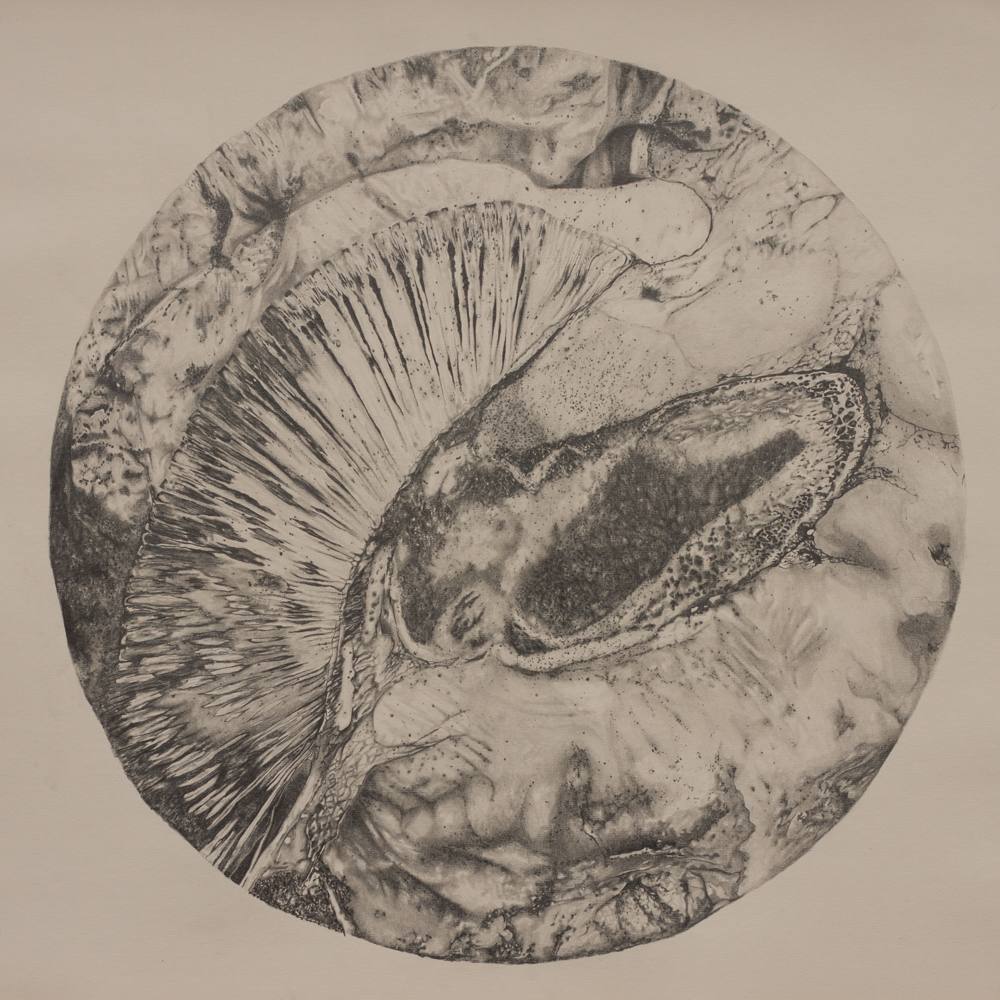
Swarm and Multiply
Graphite on Paper
Approx 60x60cm
2016-7
From the 17th century onward, artist-scientists frequently deployed the microscope and the telescope to help record their expedition findings and assert their authority in new territories, both micro and macro. Outposts and colonies were surveyed, and ordered. There was a common urge to attempt to map, classify, circumnavigate, describe and understand ‘foreign bodies’. In Robert Hooke’s Micrographia (1665), he wrote ‘that there is not less curiosity in those parts which our single eye cannot reach, than in those which are more obvious’ – the book is filled with revelatory engravings of fleas, gnats, and the compound eyes of a fly.
Swift’s Gulliver’s Travels (1726), repeatedly uses a similar conceit of optics in parodying the language and imagery of science and travel journals: the narrator, a trained surgeon, is disgusted by his close-up view of the Brobdingnag giants’ skin, but then remembers the shock his own face had earlier given to the tiny Lilliputians. For all Gulliver’s empirical observations, by the end of his travels he has lost all perspective.
Today, the language of travel and migration is again heavily politicized with biological terms. This drawing presents a swirling mass of details extracted from jellyfish, oil slicks, funghi and the head of a locust – whether it is planetary or petri dish in scale is left uncertain. The title is taken from a phrase in HG Wells’ War of the Worlds (1898), which itself opens with a quotation from the astronomer Kepler: ‘But who shall dwell in these worlds if they be inhabited?... Are we or they Lords of the World?’
Back